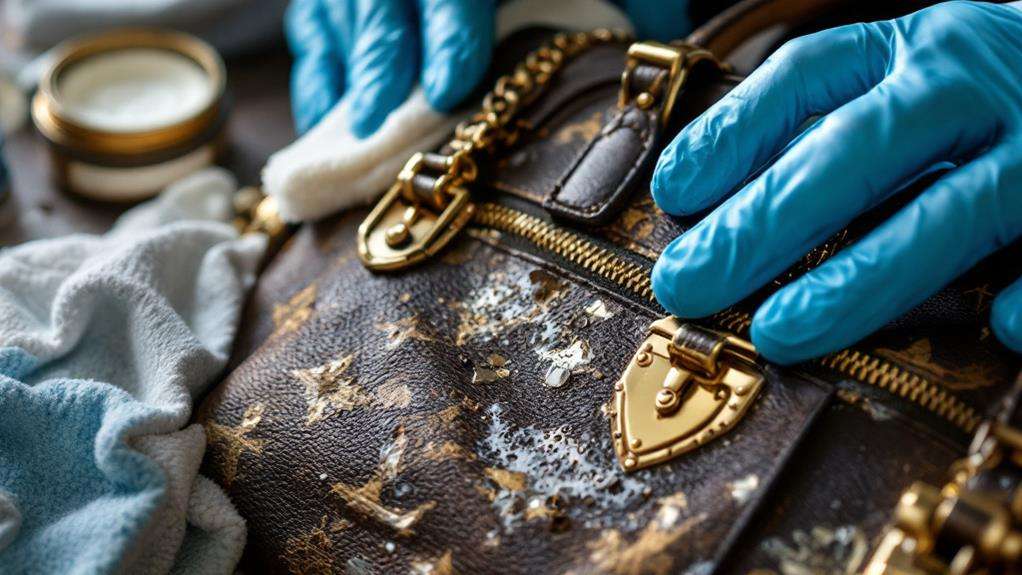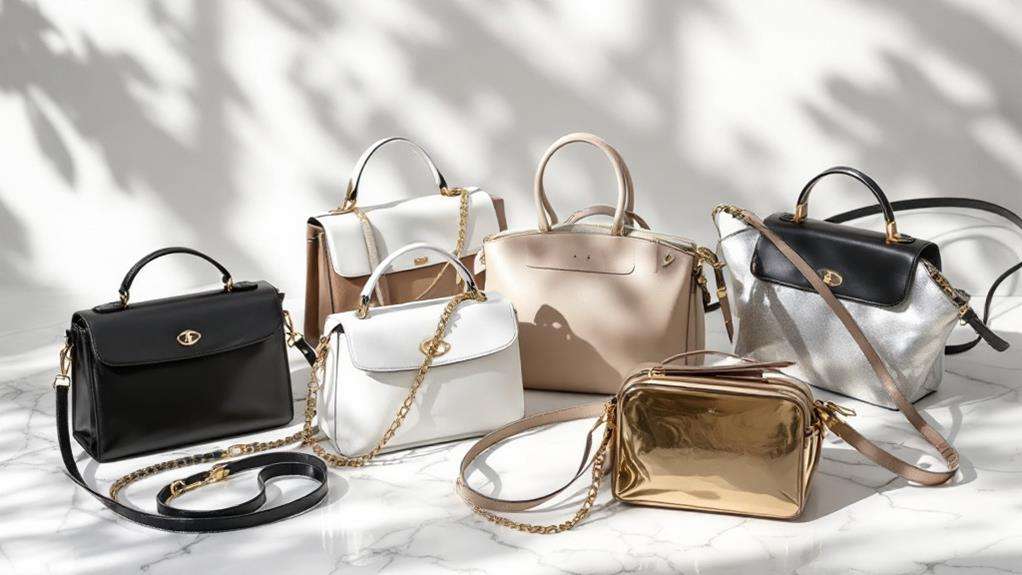What Is the Definition of a Handbag?
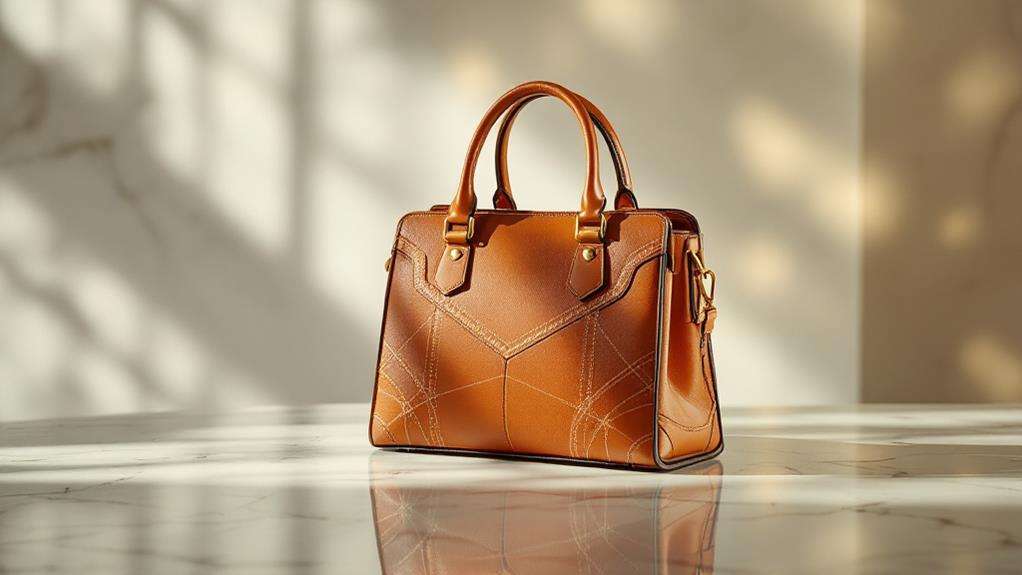
A handbag is your go-to accessory, crafted to carry personal necessities like keys, money, and makeup. It typically features handles or a shoulder strap for convenience. Made from materials like leather, fabric, or synthetics, handbags aren't just about practicality—they're fashion statements, too. This idea dates back to ancient times, evolving into stylish icons today. With diverse styles like totes and clutches, handbags reflect personal taste and cultural trends. They're more than just bags; they symbolize empowerment and expression. Curious about how they balance functionality with aesthetics or influence fashion? There's much more to uncover.
Understanding Handbag Basics
Regarding understanding handbag basics, you'll find that they're much more than just an accessory. A handbag is a small bag designed for carrying your personal items, and it often comes with a handle or shoulder strap to make it easier for you to carry around. They're crafted from a variety of materials like leather, fabric, and synthetic substances, allowing you to choose one that matches your style and preferences.
Handbags serve dual purposes: functional and aesthetic. They aren't just about lugging your necessities; they also make a fashion statement. Whether you're heading to work or out for a casual day, the type of handbag you choose can say a lot about your personality and style. With the global handbag market hitting around $50 billion in 2023, it's clear these items are crucial for many.
Different types of handbags, such as totes, clutches, and crossbody bags, are designed for specific uses and occasions. This variety reflects the diverse trends in the fashion industry, ensuring there's always a perfect handbag for every moment. Whether you're aiming for practicality or style, a handbag is an irreplaceable part of your daily life.
History and Evolution
While handbags today play an important role in both functionality and fashion, their roots trace back to ancient civilizations. In these early societies, handbags were necessary for carrying goods and personal items, serving as practical tools rather than the fashion statements we recognize now. As time progressed, the history of handbags reveals a fascinating transformation.
In the 19th century, handbags began evolving from simple pouches into more structured and stylish forms. This evolution marked a significant shift, as handbags started to reflect the social and cultural trends of the period. By the mid-20th century, they became crucial fashion accessories. Influential designers and shifting cultural dynamics played a significant role in this change, elevating handbags from mere utility items to symbols of personal style and taste.
Today, the handbag market is a reflection of diverse styles and consumer preferences. Contemporary handbags highlight innovations that balance functionality with aesthetics, catering to a wide range of needs and fashion sensibilities. As luxury handbags emerged as status symbols, they gained historical significance by tying themselves to social status and fashion identity. The history of handbags is a voyage of adaptation and style, mirroring societal changes over time.
Materials and Craftsmanship
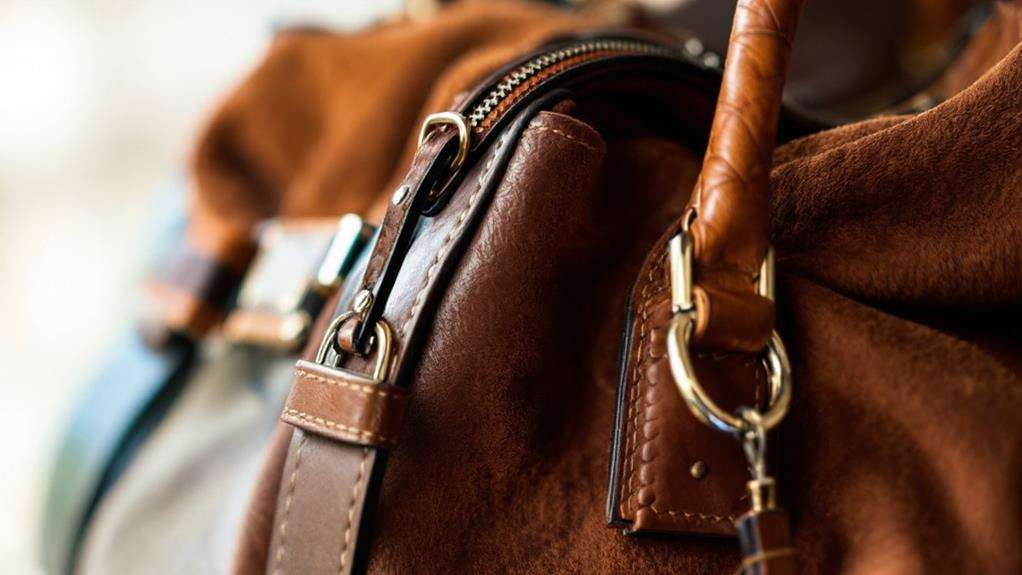
In regard to the allure of handbags, materials and craftsmanship are at the heart of their appeal. When you're choosing a handbag, the materials used speak volumes about its durability and style. Leather, fabric, synthetic fibers, and canvas are common choices, each offering unique benefits. Leather, especially premium types like lambskin or calfskin, is favored by luxury brands for its softness and long-lasting nature, adding significant value to the handbag.
Craftsmanship plays a vital role, too. High-quality handbags often feature careful hand-stitching and detailing that not only improve their aesthetic appeal but also guarantee longevity. Some brands offer bespoke services, allowing you to personalize your handbag regarding color, material, and design elements, giving it a unique touch that reflects your personal style.
With growing environmental awareness, sustainable materials like recycled plastics and organic cotton are gaining popularity. These eco-friendly options cater to consumers who are conscious of the environmental impact of their purchases. So, when selecting a handbag, consider both the materials and the craftsmanship. Together, they define not just the look and feel of the handbag, but its place in your collection.
Fashion and Cultural Impact
Handbags aren't just practical items; they're powerful fashion statements and cultural icons. When you carry a handbag, you're not just holding your necessities; you're showcasing a piece of your personality and possibly your social status. Luxury brands like Hermès and Chanel lead the way in setting trends, making handbags significant fashion accessories. In 2023, the global handbag market was valued at around $50 billion, underscoring its importance in the fashion industry and consumer culture.
Handbags have transcended their functional role to become symbols of femininity, empowerment, and personal expression. They've been prominently featured in literature and media, highlighting their cultural impact across diverse societal contexts. As cultural shifts occur, such as the rise of fast fashion, handbag designs evolve with consumer preferences. There's now a greater emphasis on sustainability and ethical manufacturing practices, reflecting broader societal values.
Iconic handbag styles often achieve legendary status, becoming cultural symbols themselves. Consider the Birkin bag, which is not just an accessory but a coveted item among fashion enthusiasts and collectors. By choosing specific handbags, you're aligning yourself with certain cultural narratives, expressing individuality while participating in a global fashion conversation.
Practical Uses and Trends
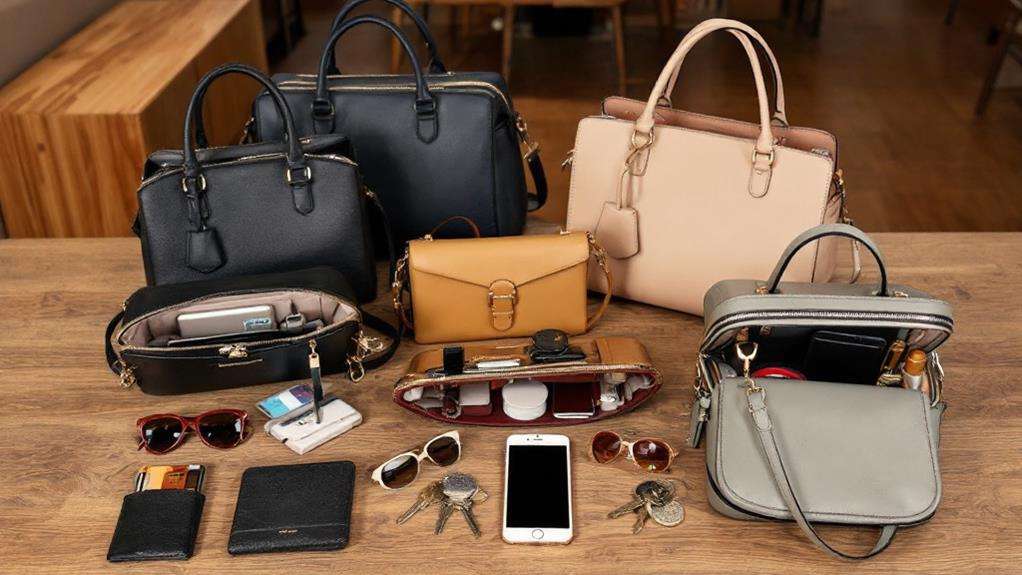
For many, a handbag is more than just an accessory; it's a practical companion that keeps your necessities within arm's reach. Regardless of you're carrying money, keys, cosmetics, or other personal items, a handbag offers convenience and functionality. Its practicality has made it a vital part of everyday life, allowing you to stay organized and prepared for any situation.
The global handbag market, valued at approximately $50 billion in 2023, highlights its importance in both fashion and practicality. Fast fashion brands attract younger consumers, resulting in evolving styles and purchasing trends. These brands offer trendy, affordable options, making it easy to switch up your style without breaking the bank. Meanwhile, luxury handbags remain coveted as status symbols and investment pieces, influencing how people choose their handbags.
Sustainability trends are also reshaping the handbag industry. Many consumers now prioritize eco-friendly materials and ethical manufacturing practices, demanding that brands adapt to these values. This shift not only impacts how handbags are made but also encourages you to make more conscious purchasing decisions. As you navigate these trends, consider how your handbag choices reflect your style, values, and needs.

